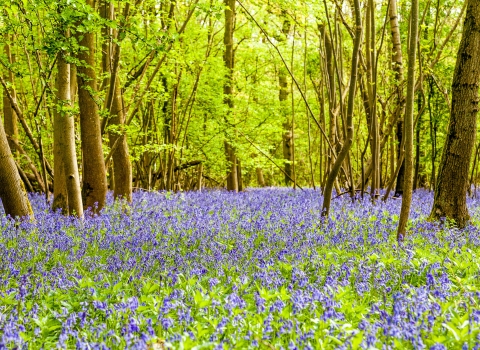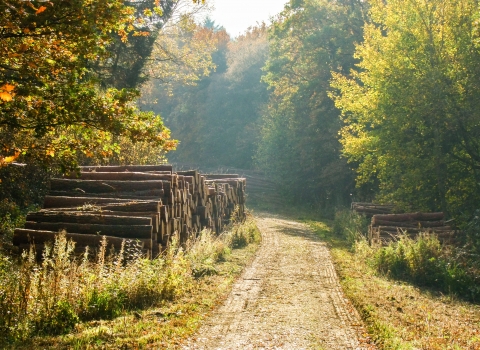Ash dieback Hymenoscyphus fraxineus is a chronic fungal disease that has been spreading across the UK. It was first recorded in Worcestershire in 2016 and now appears to be widespread in the county. There is a chance that the disease will signficantly alter some of our woodlands and so the Trust is taking an active interest in monitoring its spread in the county.
Symptoms of Ash dieback
The first symptoms of the disease are the blackening of leaves on the tips of small branches. These are especially noticeable in saplings but also occur in bigger trees. In saplings this is followed by blackened strips on the main stem and small branches and the whole sapling soon dies. In bigger trees there may be a short resurgence of new growth. Branches soon die-back and eventually the whole tree dies.
Control of the disease
The infection is widely spread by wind-borne fungal spores and at present there is no effective way to prevent the spread of the disease. Therefore no additional bio-security measures are being put in place on our nature reserves.
Our response
Worcestershire Wildlife Trust is concerned about the impacts of ash dieback on our woodlands and in the wider countryside and we are following current research into viable ways to reduce the spread and impact of the disease.
The Trust strongly believes that to maintain biodiversity in woodlands they must be managed using forestry techniques to create suitable structure.
Our forestry is undertaken to promote biodiversity and, whilst we maximise impact from any timber produced as a by-product of that work, we have assessed the wildlife impacts of ash dieback on our infected sites; we are not currently planning to proactively fell infected trees or undertake replanting with alternative species. In coppice areas we will continue layering existing coppice stools where appropriate.
We will continue to review the impacts but at present we believe that whilst the loss of some or all ash will have negative impacts on some specific species in our woodlands, the opening of the canopy may produce some benefits and the planting of unsuitable alternate species would compound the negative impact of ash dieback on woodland ground flora and fauna.
Health and safety
We already monitor our woodlands to reduce risks to a level reasonable for a natural environment but will be undertaking an additional assessment of higher risk areas such as public footpaths, roadsides and car parks on our sites.


